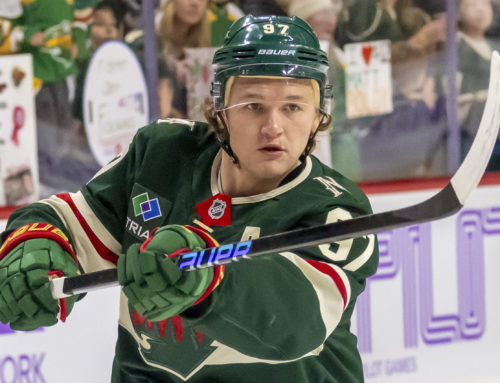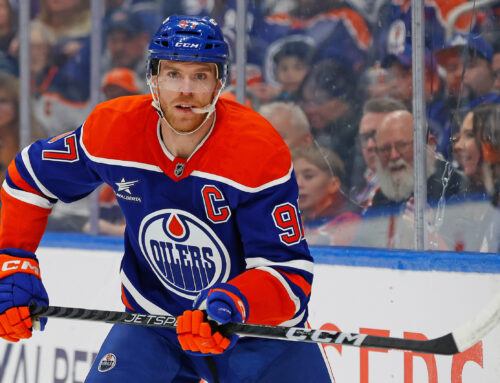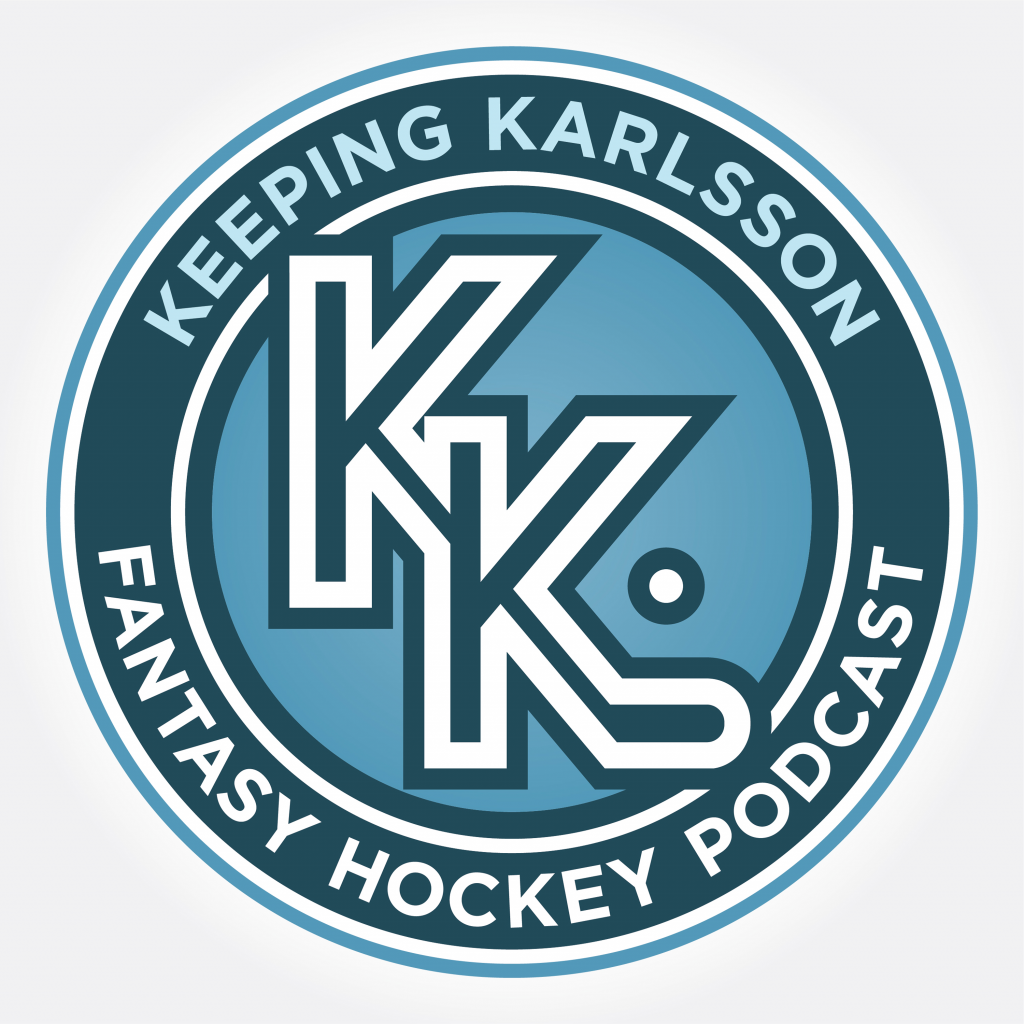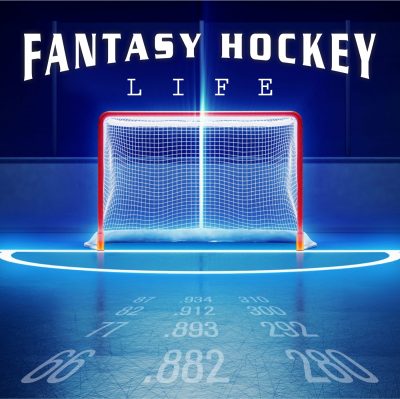Welcome back to another edition of Analytics Advantage. With the first round of the playoffs in the rearview, I wanted to dig into how goaltending impacted who moved on and who packed up early. This week's visuals are updated with data through May 5th (end of the first round) and include a few new features that make it easier to explore trends.
Each chart now has a player and team input box, so you can quickly isolate matchups or compare specific players across the board. There is also a team status filter that lets you highlight "Eliminated" or "Still Alive" teams , which comes in handy when you're trying to make sense of how results lined up with performance.
Let's start with goaltending, where the biggest differences in round one was often less about volume and more about quality.
Save Percentage vs. Average Shot Distance
This chart looks at Save Percentage along the X-axis and Average Shot Distance on the Y-axis. Teams that are up and to the right are keeping shots to the outside and getting solid goaltending. Teams down and left are seeing closer shots and letting more in.
Looking at the teams that moved on, we can see that Sergei Bobrovsky with Florida, Logan Thompson with Washington, and Calvin Pickard with Edmonton all faced a lot of shots from the outside. Adin Hill on Vegas also fits that mold of not having opponents get in tight.
Connor Hellebuyck and Eric Comrie for the Jets landed more in the middle of the chart: Not super close shots, but not far either. That lines up with what we saw from them. Hellebuyck struggled, though he has the ability to bounce back. Comrie was more of a mid-range story.
Jake Oettinger posted a great save percentage. Frederik Andersen was outstanding. Stolarz and Kochetkov both played well. Stuart Skinner, on the other hand, struggled.
Among the eliminated teams, the best goaltending performances came from Filip Gustavsson with the Minnesota Wild, Jacob Markström on the New Jersey Devils, and Jordan Binnington from the St. Louis Blues. All three had strong series. On the flip side, Andrei Vasilevskiy had a rough one, being very below average in save percentage, which is not what you want to see from him, and not what anyone would expect.
Save Percentage vs. Expected Goals Against
This chart looks at Save Percentage on the X-axis and Expected Goals Against on the Y-axis. Goalies in the top right are stopping a lot of shots despite facing a tough workload. Top-left means they're overwhelmed, and not getting enough help defensively. Bottom-right is where you find goalies seeing easier shots but still doing their job. Bottom-left is the worst of both, not facing much and still letting pucks in.
Jake Oettinger stands out in the top right, playing amazing. Markström, Gustavsson, Binnington, Thompson, and Anthony Stolarz are also in that group , all solid goalies who had great series. Frederik Andersen had the best save percentage and an incredible series. Bobrovsky played alright.
In the mid-tier group, you've got guys like Adin Hill and Linus Ullmark. Their expected goals against numbers were a little high, but they did enough.
Expected Goals Against vs Goals Against
This one is a player-level graph, comparing Expected Goals Against on the X-axis and actual Goals Against on the Y-axis. The higher up and to the right a player is, the more they're getting scored on, and the more dangerous chances they're allowing.
Looking at this one, the team that got scored on the most is clearly the Los Angeles Kings. You can see they gave up a lot of goals and had a high expected goals against , they were just getting pounded.
One of the clearer takeaways from this chart is how the "Still Alive" teams compare to the eliminated ones. Still-alive teams have lower average expected goals against and lower actual goals against, which is what you'd expect. When you highlight both groups, you'll notice most of the players from still-alive teams are down closer to the bottom-left, while the eliminated teams have more players drifting toward the top right. This chart gives you a direct read on team-level defensive performance.
It's worth using the filters here to dig deeper. You can look at lines, filter by position, or highlight individual teams to see who's holding it down defensively and who got lit up. It's a good tool to compare expectations with results.
Hits vs. Hits Taken
This chart maps Hits on the X-axis and Hits Taken on the Y-axis. Players in the top-right are involved in heavy physical play, giving and taking hits. They are usually guys who forecheck hard and aren't afraid to trade blows. Top-left is more of a defenseman zone, by taking a lot of hits but not throwing many. Bottom-right means you're dominating physically, dishing out hits without taking much back. And bottom-left is the low-contact zone, or players who aren't involved physically in either direction.
Looking at this one, the player who has been hit the most by far is Chris Tanev on the Toronto Maple Leafs, with 43 hits taken. On the flip side, the player who's thrown the most hits is Parker Kelly from Colorado, with 44 hits delivered. Zach Hyman also stands out on this chart, showing his physical presence for the Oilers.
One thing that stands out when comparing "Eliminated" vs. "Still Alive" teams is that the eliminated teams were a bit more physical overall. That suggests something about puck control, the teams doing the most hitting might not have the puck as much, and are having to fight to get it back. So, hitting more doesn't always mean better, sometimes it just means you're chasing the game.
Other notable players include Neal Pionk on Winnipeg and Lian Bichsel on Dallas, both highly physical and pushing toward the top-right corner of the chart. Anyone who fans out that direction is playing a more aggressive game. Like the other charts, use the filters to highlight teams and players to see how physical play lined up with round one results.
PDO vs. Total Points
This chart plots PDO on the X-axis and Total Points on the Y-axis. Top-right is where you see players who are riding both an elevated PDO and high point production, which means they're getting bounces and capitalizing. Top-left is low PDO and high points, or the guys earning it without much puck luck. Bottom-right is high PDO but low point totals, so they are getting lucky but not converting. And bottom-left is cold all around: No production and no luck.
Looking at the chart, you can see that players from teams still alive are generally further to the right and higher up. That means, on average, they're both producing more and getting more bounces. The teams that moved on likely got some extra luck, and the results reflect that. The eliminated players shift more to the left, showing a bit less production and less luck overall.
The Montreal Canadiens really stood out; they were incredibly unlucky. A lot of their players were below the league average for PDO. On the other hand, the St. Louis Blues were getting plenty of bounces, with many players showing up to the right of average. The Kings also leaned right, and a bunch of other teams hovered near the middle.
Among the teams still in it, Florida looks like they're getting their fair share of luck. The Panthers are full of players getting bounces. Winnipeg, on the other hand, is the opposite they're mostly to the left. They've had very little go their way.
A few individual names to call out: Evan Bouchard for Edmonton is producing but not getting lucky; Cole Perfetti and Vladislav Namestnikov for Winnipeg are in the same boat playing well, just not getting results. On the other side, some guys are getting very lucky: Eetu Luostarinen, Jakob Chychrun, and Andrei Svechnikov are getting big boosts, along with Dylan Strome and a bunch of other Panthers.
Giveaways vs. Takeaways
This chart compares Giveaways on the X-axis and Takeaways on the Y-axis. Top-right is where you see the chaotic or high-tempo players – guys who are involved a lot – but it's a double-edged sword. Top-left is the ideal spot with low giveaways and high takeaways, meaning disciplined, disruptive, and strong with the puck. Bottom-right is the worst zone: High giveaways and low takeaways, sloppy and passive. And bottom-left is just quiet with few giveaways and takeaways, usually being more careful or just not involved much.
Looking at the chart, the first player that jumps out is Cale Makar. He fits that chaotic mold and sits firmly in the top right. He is by far the most noticeable player in this chart. Another standout is Justin Faulk from the St. Louis Blues, with 21 giveaways and just 1 takeaway, that's the highest giveaway count on the board.
Other names with high giveaways include Josh Manson, and overall, there's not much balance it's a lot easier to give up the puck than it is to take it away. That shows up clearly here.
There is also a lot of uniformity in the middle of the graph. Some guys don't give it away. Some guys don't take it away. And some guys just don't touch the puck much to really move the needle. That's what you're seeing in the core cluster of this one.
Wrapping It Up
These six visuals provide a clean look at how teams and players are trending through the 2025 NHL Playoffs. Whether it's goaltending performance, defensive structure, physical presence, or just who's getting the bounces, each chart gives context that goes deeper than the raw box score.
Use the filters and inputs to compare matchups, highlight teams, or zero in on individual players. There's a lot you can take away from just seeing who's above the line and who's getting stuck in the wrong quadrant.
Thanks for checking it out. If you've got questions or want to dig into something specific, you can always find me on Twitter @DH_staspup. See you next week.





 FLA
FLA CHI
CHI NYR
NYR PIT
PIT L.A
L.A COL
COL BUF
BUF BOS
BOS WPG
WPG CBJ
CBJ PHI
PHI ANA
ANA MTL
MTL CGY
CGY
